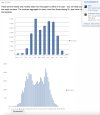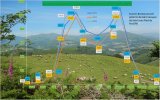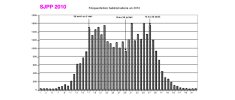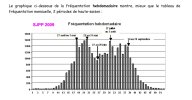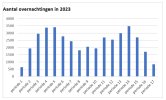Most of my suggestions are on previous threads, and there is a lot of good advice above. In particular, I was pleased and astonished to read:
I will put a plug in for the WisePilgrim app, which can format a WhatsApp message to send if you don't have the language skills to make an enquiry in person.
Wow! This is huge! Could
@wisepilgrim put out an app for the Camino Madrid within the next month, please?

Doug also notes:
it [not pre-booking] is a high risk strategy before Pamplona at certain times of the year when that section of the CF becomes popular. I have experienced this at Easter and in early May. Others report that September is also risky.
It can also be risky towards the end of the
Camino Frances, especially in July and August.
Booking accommodations (if one isn't using the
Wise Pilgrim WhatsApp Helper) benefits from some knowledge of Spanish, as do the methods of coping if one hasn't booked and doesn't find beds where expected, like asking local Spaniards as good_old_shoes suggests:
f) If all fails, walk into a bar, have a nice drink, find out where the next place with a bed is, and get a taxi there.
g) Sometimes when talking to the locals or hospitaleros of the places that are 'completo', beds suddenly appear from nowhere ;-)
If one doesn't have the Spanish, befriending a Spanish pilgrim can also be helpful.

It's hard to find good advice to add to the great advice that is needed. I will just add, building on what Doug wrote in his post, that you may find that different strategies work in different stages of your Camino.
When I walked in July/August 2016 with my son I adopted a number of different strategies at different points. I started pre-booking the first couple of nights in Roncesvalles and Zubiri to give me that peace of mind when starting the Camino. I figured I'd have enough to worry about and learn without having to worry about finding accommodations, too. After a few days, I hoped I would hit my stride.
I didn't try to pre-book Pamplona, nor did I try and walk in and find accommodations there. It was during the San Fermines. I knew it would be full. Instead I adopted a different strategy of stopping 5 km before, at Trinidad de Arre.
After that, I abandoned pre-booking, for a long while without issues. This gave us the flexibility of finding out what daily distances worked for us by trial and error. We started off with shorter days (like the 15 km to Trinidad de Arre, the same to Zariequigui, and the same (with a detour to Eunate) to Puente la Reina. We gradually increased the distance daily walked to 25-30 km, but that proved too much for my son's feet. It became obvious that 20-25 was much better for us. Having that time to figure out what our preferred daily distance was very useful. However, things got a lot hairier as we got into Galicia. We entered Triacastela in the morning and the first four albergues we checked were full with bookings. We did find an albergue with room. But after that I started to book my preferred albergues (we tended to stay in private ones) a day or two in advance. We didn't feel hampered by this because we knew by then what a good distance was for us.
Similarly, for my 2018 Portugues, I used a variety of strategies. I booked the first night in Porto well in advance and the last night in Santiago a day or two in advance. The rest I didn't pre-book, with a couple of exceptions: one albergue I booked well in advance that I particularly wanted to stay at and that I knew filled up, and another in a village that I heard was hosting an event that might fill it up.
The message being: you don't have to pick a strategy and use it throughout your Camino. You can switch it up to whatever suits the moment.
As a final note: We've been hearing a lot in recent threads about how the crowds may be ruining the
Camino Frances and make it difficult to walk in the idyllic ways of yesteryear. I certainly don't wish to re-open that discussion. But I think LTFit's recollection of her
Camino Frances many years ago can provide an interesting counterpoint. If things don't go perfectly and you find yourself scrambling for accommodation, rather than thinking about it as something new and a fall from the Eden of yesteryear, you can instead think of it as experiencing what earlier pilgrims experienced.
8 of us slept in the entryway of the church. Outside. Without a sleeping bag or mat. From there on it was often necessary to sleep on the hard floor of gyms. Nice? Not really but there was no other option so you did it.


















